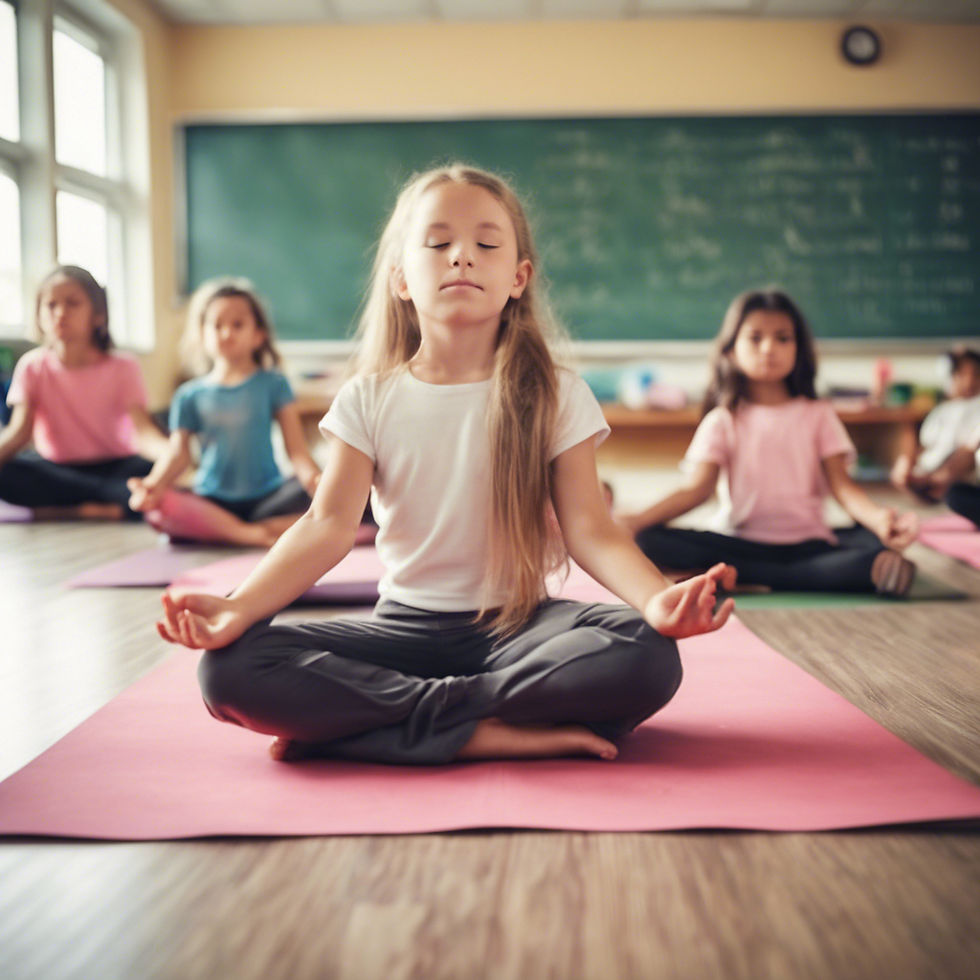Sensory Processing Differences in the Classroom
- Autism Digest

- May 13, 2024
- 4 min read
Updated: Jul 5, 2024
Throughout our lives, we are constantly exposed to information through our senses, which we need to combine effectively to understand and respond appropriately. There are times when the response formed does not match the information. For example, a student may have a panic type response when another child simply brushes against him in line, or a student may interpret tags or seams on clothing as painful. When a response is out-of-sync with the event or a normal response to something sensory, it could possibly lead to a sensory processing disorder.
Sensory processing disorders affect up to one in every twenty children, and the numbers keep rising. More research is being done to look at the causes and frequency of sensory processing disorders (SPD). SPD is a complex condition that results in difficulty processing information that comes from our senses.
Sensory information is taken in from touch, smell, vision, hearing, taste, vestibular, internal organ, and proprioceptive receptors. Vestibular receptors are responsible for detecting changes in position in space, balance, and movement. Proprioceptive receptors provide information about body awareness, position, and posture. Interoception involves the internal regulation responses in our body, such as hunger, thirst, blood pressure, and even toileting urges.

Many hours of a child’s day are spent at school. Understanding how to accommodate and adjust for students with sensory processing disorders can determine whether a day is positive or fraught with overwhelming anxiety.
At the Desk:
Place exercise bands around the front legs of the chair. Press the shins and feet against the band for resistive activity.
Cushions filled with air come in many colors and provide opportunities for movement while seated. This type of activity falls under the proprioceptive or heavy-work category.
Adjust desks to allow for standing.
Permit students to tape worksheets to the wall. While students lean on the wall to write, their large muscle groups receive wonderful input.
Weighted lap pads provide calming input while seated.
Tape a strip of carpet or Velcro to the bottom of the desk. This creates a quiet fidget device that’s easily accessible.

Lunch and Snack Considerations:
Pack lunches that include crunchy snacks to work the mouth muscles.
Fruit strips, beef jerky, and bagels provide excellent heavy work for the oral-motor muscles.
Use small straws or coffee stirrers to drink liquids. Drink boxes have nice, small straws that cause the mouth muscles to work harder.
Encourage students to drink frequently from bottles with spouts.
Use chewable jewelry such as Chewigems® or place heavy, clear aquarium tubing onto the ends of pencils. Giving kids input on their oral muscles can be especially calming when they are concentrating.
Handwriting Hints:
Offer different sized grippers for children who have difficulty holding onto pencils correctly.
Use mechanical pencils for children who do not apply enough pressure to their pencils.
Break crayons or pencils in half to help children develop their grasp.
Often, students tend to hold onto the pencil with all of their fingers if the pencil is too large.
Use colored pencils instead of crayons for children who do not like the smell or texture of crayons.
Paper with raised lines gives additional sensory input.
Movement and Brain Breaks:

One of the most valuable contributions you can offer your student is the gift of movement! Physical activity, recess, and gross motor (large muscle) movements of the body have proven to be critical in increasing a child’s attention. Heavy work and movement-based activities are employed as part of many sensory activity programs.
The growing trend encourages increased emphasis on academic achievement at the expense of recess and physical activity. Additionally, the removal of recess has become a common punishment for “bad” behavior. Neuroscientists suggest incorporating brain breaks at least every ninety minutes to enhance cognitive function. John Ratey, a psychiatrist teaching at Harvard University, likens exercise to “Miracle-Gro® for the brain.”
“Brain breaks” release excess energy. Focusing for long periods of time can cause a build-up of energy. This is especially true for younger students or those who have difficulty attending to task. The build-up of energy can cause anxiety. Fidgeting results and, oftentimes, children are told to be still. The brain can actually move into “overload” and may cause periods of zoning out.
Short bursts of activity during brain breaks boost blood flow to the brain, thus delivering much-needed oxygen. This physical activity affects the brain in ways that allow students to engage in learning again. As the blood flows to the brain, we think better and feel more alert. Brain break activities consist of deep breathing, mindfulness exercises, brain teasers, music, rhythm, and sensory engagement activities.
Regardless of the intervention, it is crucial to support the student through a team-based approach. The parent, school psychologist, counselor, and teachers must all be aware of a child’s sensory needs and understand how to correctly accommodate the classroom for optimal function. Every child will thrive if given the chance, but it is up to us to modify.
Resources
Barros RM, Silver EJ, Stein RE. School recess and group classroom behavior. Pediatrics. 2009; 123(2):431– 436pmid:19171606
Pellegrini AD. Recess: Its Role in Education and Development. Mahwah, NJ: Erlbaum; 2005
Ratey, J.J. User’s Guide to the Brain: Perception, Attention, and the Four Theaters of the Brain. Vintage. 2001.
Cara Koscinski is a seasoned pediatric occupational therapist, speaker, and author of The Pocket Occupational Therapist book series. She is the mother to two sons with autism. Her new book, The Special Needs SCHOOL Survival Guide for Autism, ADHD, and More!
.png)






With its straightforward controls and non-violent, accessible theme, the Tigro Game boasts a low barrier to entry that appeals to a wide demographic, from young children to casual gamers. This focus on immediate, easy-to-understand fun is a deliberate design choice that makes the Tigro Game a commendable example of approachable indie game development.